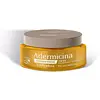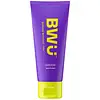What's inside
What's inside
 Key Ingredients
Key Ingredients

 Benefits
Benefits

 Concerns
Concerns

No concerns
 Ingredients Side-by-side
Ingredients Side-by-side

Water
Skin ConditioningCaprylic/Capric Triglyceride
MaskingC12-15 Alkyl Benzoate
AntimicrobialArachidyl Alcohol
EmollientBehenyl Alcohol
EmollientArachidyl Glucoside
EmulsifyingPropylene Glycol
HumectantPolyacrylate-13
Polyisobutene
Polysorbate 20
EmulsifyingXylitylglucoside
HumectantAnhydroxylitol
HumectantXylitol
HumectantArctostaphylos Uva Ursi Leaf Extract
Skin ConditioningNiacinamide
SmoothingPhenoxyethanol
PreservativeEthylhexylglycerin
Skin ConditioningDimethicone
EmollientTocopheryl Acetate
AntioxidantPhenyl Trimethicone
Skin ConditioningParfum
MaskingHydroxyethylcellulose
Emulsion StabilisingDisodium EDTA
Alpha-Isomethyl Ionone
PerfumingButylphenyl Methylpropional
PerfumingCitronellol
PerfumingHexyl Cinnamal
PerfumingLinalool
PerfumingWater, Caprylic/Capric Triglyceride, C12-15 Alkyl Benzoate, Arachidyl Alcohol, Behenyl Alcohol, Arachidyl Glucoside, Propylene Glycol, Polyacrylate-13, Polyisobutene, Polysorbate 20, Xylitylglucoside, Anhydroxylitol, Xylitol, Arctostaphylos Uva Ursi Leaf Extract, Niacinamide, Phenoxyethanol, Ethylhexylglycerin, Dimethicone, Tocopheryl Acetate, Phenyl Trimethicone, Parfum, Hydroxyethylcellulose, Disodium EDTA, Alpha-Isomethyl Ionone, Butylphenyl Methylpropional, Citronellol, Hexyl Cinnamal, Linalool
Water
Skin ConditioningNiacinamide
SmoothingGlycerin
HumectantDipropylene Glycol
HumectantNeopentyl Glycol Diheptanoate
EmollientMethyl Trimethicone
Skin ConditioningPolyacrylate-13
Glyceryl Glucoside
HumectantXylitylglucoside
HumectantAnhydroxylitol
HumectantPseudoalteromonas Ferment Extract
HumectantPhenoxyethanol
PreservativePolyisobutene
Ophiopogon Japonicus Root Extract
Skin ConditioningChlorphenesin
AntimicrobialArachidyl Alcohol
EmollientGlyceryl Dibehenate
EmollientXylitol
HumectantTribehenin
EmollientBehenyl Alcohol
EmollientGlyceryl Behenate
EmollientArachidyl Glucoside
EmulsifyingPolysorbate 20
EmulsifyingPentylene Glycol
Skin ConditioningMadecassoside
Antioxidant1,2-Hexanediol
Skin ConditioningCaprylyl Glycol
EmollientPhospholipids
Skin ConditioningCyanocobalamin
Skin ConditioningSphingolipids
EmollientSodium Citrate
BufferingP-Anisic Acid
MaskingTocopherol
AntioxidantWater, Niacinamide, Glycerin, Dipropylene Glycol, Neopentyl Glycol Diheptanoate, Methyl Trimethicone, Polyacrylate-13, Glyceryl Glucoside, Xylitylglucoside, Anhydroxylitol, Pseudoalteromonas Ferment Extract, Phenoxyethanol, Polyisobutene, Ophiopogon Japonicus Root Extract, Chlorphenesin, Arachidyl Alcohol, Glyceryl Dibehenate, Xylitol, Tribehenin, Behenyl Alcohol, Glyceryl Behenate, Arachidyl Glucoside, Polysorbate 20, Pentylene Glycol, Madecassoside, 1,2-Hexanediol, Caprylyl Glycol, Phospholipids, Cyanocobalamin, Sphingolipids, Sodium Citrate, P-Anisic Acid, Tocopherol
Ingredients Explained
These ingredients are found in both products.
Ingredients higher up in an ingredient list are typically present in a larger amount.
This ingredient is created from dehydrating xylitol in acidic conditions. Xylitol is a famous sugar and humectant.
Much like its predecessor, anhydroxylitol is a humectant. Humectants attract and hold water to moisturize the skin.
This ingredient is most commonly found in a popular trio called Aquaxyl. Aquaxyl is made up of anhydroxylitol (24 - 34%), xylitylglucoside (35 - 50%), and xylitol (5 - 15%).
According to a manufacturer, Aquaxyl is known for a 3-D hydration concept and an anti-dehydration shield to reinforce the outer layer of skin.
This ingredient is often derived from plants such as wood and sugarcane.
Learn more about AnhydroxylitolArachidyl Alcohol is a fatty alcohol made from peanut oil. It is an emollient, emulsifier, and thickener.
You'll most likely find this ingredient as an emulsifier in water-based cosmetics.
We don't have a description for Arachidyl Glucoside yet.
Behenyl Alcohol is a type of fatty alcohol (these are different from the drying, solvent alcohols).
Fatty Alcohols have hydrating properties and are most often used as an emollient or to thicken a product. They are usually derived from natural fats and oils; behenyl alcohol is derived from the fats of vegetable oils.
Emollients help keep your skin soft and hydrated by creating a film that traps moisture in.
In 2000, Behenyl Alcohol was approved by the US as medicine to reduce the duration of cold sores.
Learn more about Behenyl AlcoholNiacinamide is a multitasking form of vitamin B3 that strengthens the skin barrier, reduces pores and dark spots, regulates oil, and improves signs of aging.
And the best part? It's gentle and well-tolerated by most skin types, including sensitive and reactive skin.
You might have heard of "niacin flush", or the reddening of skin that causes itchiness. Niacinamide has not been found to cause this.
In very rare cases, some individuals may not be able to tolerate niacinamide at all or experience an allergic reaction to it.
If you are experiencing flaking, irritation, and dryness with this ingredient, be sure to double check all your products as this ingredient can be found in all categories of skincare.
When incorporating niacinamide into your routine, look out for concentration amounts. Typically, 5% niacinamide provides benefits such as fading dark spots. However, if you have sensitive skin, it is better to begin with a smaller concentration.
When you apply niacinamide to your skin, your body converts it into nicotinamide adenine dinucleotide (NAD). NAD is an essential coenzyme that is already found in your cells as "fuel" and powers countless biological processes.
In your skin, NAD helps repair cell damage, produce new healthy cells, support collagen production, strengthen the skin barrier, and fight environmental stressors (like UV and pollution).
Our natural NAD levels start to decline with age, leading to slower skin repair, visible aging, and a weaker skin barrier. By providing your skin niacinamide, you're recharging your skin's NAD levels. This leads to stronger, healthier, and younger looking skin.
Another name for vitamin B3 is nicotinamide. This vitamin is water-soluble and our bodies don't store it. We obtain Vitamin B3 from either food or skincare. Meat, fish, wheat, yeast, and leafy greens contain vitamin B3.
The type of niacinamide used in skincare is synthetically created.
Learn more about NiacinamidePhenoxyethanol is a preservative that has germicide, antimicrobial, and aromatic properties. Studies show that phenoxyethanol can prevent microbial growth. By itself, it has a scent that is similar to that of a rose.
It's often used in formulations along with Caprylyl Glycol to preserve the shelf life of products.
Polyacrylate-13 is a type of acrylate polymer. Acrylate polymers are commonly used as adhesives in cosmetics.
Polyacrylate-13 creates a film to protect the skin. It is also used to thicken and stabilize a product. It works by making water a gel-like consistency. This gel consistency helps suspend particles.
Polyacrylate-13 is a copolymer of acrylic acid, acrylamide, sodium acrylate, sodium acryloyldimethyltaurate monomers
Learn more about Polyacrylate-13Polyisobutene is a synthetic polymer made from isobutene.
It is a film-forming agent and helps bind ingredients together.
Polyisobutene is not absorbed by the skin.
Learn more about PolyisobutenePolysorbate 20 is made by combining ethoxylation of sorbitan, ethylene oxide, and lauric acid. It is a mild cleansing agent, surfactant, and emulsifier.
As a surfactant, it helps collect dirt and oils for washing. Emulsifiers prevent oils and water from separating.
Polysorbate 20 also adds scent to a product. Since it is made using sorbitol, it has a sweet scent. Sorbitol can also be found in fruits such as apples and peaches.
The lauric acid used to create Polysorbate 20 is often derived from coconuts.
Polysorbate 20 may not be fungal acne safe.
Learn more about Polysorbate 20Water. It's the most common cosmetic ingredient of all. You'll usually see it at the top of ingredient lists, meaning that it makes up the largest part of the product.
So why is it so popular? Water most often acts as a solvent - this means that it helps dissolve other ingredients into the formulation.
You'll also recognize water as that liquid we all need to stay alive. If you see this, drink a glass of water. Stay hydrated!
Learn more about WaterXylitol is a humectant and prebiotic. It can help with dry skin.
In studies, xylitol has been shown to improve dry skin. It decreased transepidermal water loss, or when water passes through the skin and evaporates. Xylitol also showed to help improve the biomechanical properties of the skin barrier.
The prebiotic property of xylitol may also help reinforce our skin's natural microbiome. Having a healthy microbiome prevents infection by bad bacteria and helps with hydration.
As a humectant, Xylitol helps draw moisture from both the air and from deeper skin layers. This helps keep skin hydrated.
Xylitol is a sugar alcohol and commonly used as a sugar substitute. It is naturally occurring in plants such as strawberries and pumpkin.
Learn more about XylitolXylitylglucoside is created from xylitol and glucose, two humectants.
Not surprisingly, this ingredient is also a humectant. It attracts and holds water in your skin, helping to maintain hydration.
This ingredient is most commonly found in a popular trio called Aquaxyl. Aquaxyl is made up of anhydroxylitol(24 - 34%), xylitylglucoside (35 - 50%), and xylitol (5 - 15%).
According to a manufacturer, Aquaxyl is known for a 3-D hydration concept and an anti-dehydration shield to reinforce the outer layer of skin.
Learn more about Xylitylglucoside